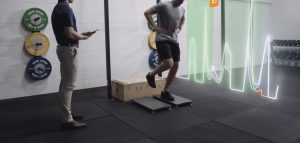Evonne’s Experience of a Knee Injury
4 years ago I was the patient and not the physio, yes physios get injured too! I twisted my knee playing social touch rugby. I felt a “click, click” deep in my knee and was immediately unable to straighten it. It was a textbook knee cartilage injury – twisting mechanism, immediate pain, and I was unable to straighten my leg fully. By the middle of the night my knee was really swollen, and I was struggling to put weight down through my leg. Despite many years working as a musculoskeletal physiotherapist I knew that it was now my turn to get help!
The MRI confirmed that I did have a tear in my cartilage. Despite having treated many orthopaedic patients I was soon that scared patient being wheeled into theatre. I didn’t know what to expect or what I was about to feel (or not feel!). It was certainly a learning experience and one that I now share with my own patients, who like I was, are fearful of the thought of surgery. I should at this point stress that there is a time and a place for surgery and it is definitely not always the first option. It depends on the type of tear and whether there are underlying arthritic changes in the knee. However, in my case I knew that I had no other option.
Meniscal Surgery
Surgery does not provide a ‘quick fix’. What surgery did for me was to remove the torn part of my cartilage so that my knee could, with time, begin to fully bend and straighten again. However, with an injury and subsequent surgery you get pain, swelling, decreased range of movement and decreased strength – thankfully I knew to expect all these signs and symptoms but not everyone does. I hobbled out of day surgery knowing that this was where the hard work began!
Physio Rehab
Routinely people who have had this type of surgery on the NHS do not get referred for physiotherapy. However, to speed up my recovery I booked myself an appointment with a physiotherapy colleague. As an experienced clinician I knew I needed a full assessment, and based on this, an individualised rehabilitation programme and hands on treatment. My rehab consisted of basic exercises in the first instance to work on range of movement and recruitment of muscles. However, I then took my rehab into the gym where using my own knowledge I was able to progressively load my knee using various pieces of equipment such as a squat rack, dead lift bar, TRX and various weights – all of which we have in our clinics at Kinetic Physio.
Thankfully I have worked with some great personal trainers in the past and I was able to use my own strength and conditioning knowledge to keep my rehab varied and challenging – this is the key to maintaining compliance and consistency! It is also important to know when to ease off and pull back slightly if required – your physiotherapist should guide you with this. Recently I have been fortunate to have access to new equipment at Kinetic Physio that measures the strength in my legs. Namely force plates and a handheld dynamometer. This has provided me with evidence that my ‘injured’ leg still requires ongoing rehab to continue to build strength. I think the force plate and dynamometer are extremely useful pieces of assessment equipment, from just the ‘feel’ of my leg function I thought it was back to full strength, but the testing has shown that there is still a weakness that I can work to improve. Kinetic Physio is currently the only private clinic in Scotland to have a force plate!
What did I learn from this experience?!
- Seek help from an experienced professional early (yes even us physios need help!)
- Trust in the process
- Stick with the rehab!!!
Thankfully, I’m now back climbing mountains….
Learn more about our measurement technology here: https://www.kineticphysio.co.uk/vald-measurement-tech/











